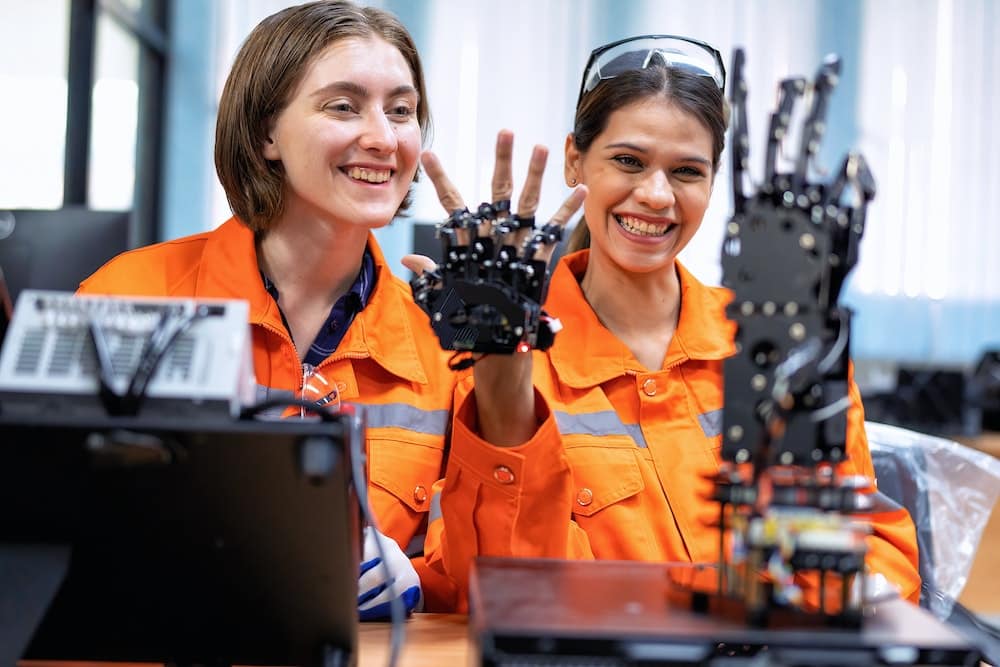What’s the Role of Autonomous Robot Swarms in Environmental Cleanup Efforts?

We’re standing on the brink of a new era, where technology is not only designed to make our lives easier but also to help us tackle some of the most pressing environmental issues. One such technology is autonomous robot swarms. This somewhat futuristic term refers to groups of robots that can act independently but are programmed to work together towards achieving a specific goal. In this case, that goal is environmental cleanup.
The Concept of Autonomous Robot Swarms
Before we delve into the role of autonomous robot swarms in environmental cleanup, let’s first understand what they’re all about.
Topic to read : Unbox the adventure: exploring player one mystery box
As the name suggests, autonomous robot swarms are a group of robots that operate autonomously, albeit in a coordinated manner, to achieve a certain task. The concept is inspired by social insects such as bees and ants, which operate in large numbers to execute tasks that would be impossible for an individual insect.
Autonomous robot swarms are designed to mimic this natural efficiency. Each robot in the swarm can perform simple tasks. However, when they work together, they can accomplish complex missions that would be difficult, if not impossible, for a single, highly specialized robot.
Topic to read : How Can AI-Driven Personal Stylists Transform Online Shopping Experiences?
The power of autonomous robot swarms lies in their numbers and their ability to self-organize. Their strength isn’t hampered by the loss of a few units, making them highly resilient – a characteristic that is incredibly useful in environmental cleanup efforts.
The field of autonomous robotics is still relatively young, but it is rapidly evolving. With the help of computer simulations and advanced algorithms, researchers are making significant strides in developing the capabilities of these robot swarms.
Autonomous Robot Swarms in Environmental Cleanup
So, how exactly do autonomous robot swarms fit into environmental cleanup efforts?
First and foremost, these robots offer a scalable and efficient solution to environmental problems. Because they operate as a unit, they can cover large areas in a relatively short amount of time. This makes them particularly useful in large-scale cleanup operations, such as oil spills or waste collection in urban areas.
Robotic swarms can be equipped with sensors to recognize and classify different types of waste. This feature allows for a more targeted and efficient cleanup. For instance, some robots are designed to pick up plastic waste, while others are designed to absorb oil spills.
Furthermore, the autonomous nature of these robots means they can work continuously without human intervention. This not only increases their efficiency but also eliminates the potential risk for human workers in hazardous environments.
Case Studies of Robot Swarms in Environmental Cleanup
To truly understand the role and potential of autonomous robot swarms in environmental cleanup, it’s helpful to look at some real-world applications.
In 2020, a team of researchers from the Massachusetts Institute of Technology developed a fleet of autonomous boats to remove waste from the Charles River. The robots were equipped with machine learning algorithms that allowed them to identify and pick up trash, all while avoiding obstacles and other boats.
In another study, scientists from the University of Bristol developed a swarm of tiny drones capable of identifying and patching up leaks in pipelines, thereby preventing harmful substances from contaminating the environment.
These examples illustrate the immense potential of robot swarms in addressing environmental issues.
The Future of Autonomous Robot Swarms in Environmental Cleanup
As promising as they are, autonomous robot swarms are still in the early stages of development. Their full potential in environmental cleanup is yet to be realized.
The future of autonomous robot swarms in environmental cleanup is likely to witness more advanced and versatile robotic systems. For instance, we might see swarms that can operate in extreme environments like the deep sea or outer space, where human intervention is limited or impossible.
Moreover, these robotic systems are likely to be equipped with more sophisticated sensors and machine learning algorithms, allowing them to adapt to various cleanup scenarios and make real-time decisions.
Despite the challenges that lie ahead, it’s clear that autonomous robot swarms have a crucial role to play in our fight against environmental degradation. By combining the efficiency of nature with the power of technology, we are creating a potent tool that can help us restore and protect our environment for future generations.
Environmental Implications of Autonomous Robot Swarms
Building on their potential, autonomous robot swarms could significantly transform environmental preservation and restoration practices. The robots’ ability to work independently and collectively makes them perfectly suited for various environmental cleanup activities, ranging from waste collection and disposal to remediation of polluted water bodies and habitats.
For example, autonomous robots could be deployed to clean up plastic waste from our oceans. Each robot could be equipped with a sensor to detect and identify plastic rubbish and a mechanical arm to retrieve it. Working in swarms, these robots could systematically scour large swathes of the ocean, collecting vast amounts of plastic waste that would be otherwise difficult and time-consuming for humans to remove manually.
Similarly, robot swarms could be used to clean up oil spills. Engineers could design robots with absorbent materials that soak up oil while leaving the surrounding water untouched. The robot swarm could spread out over a large area of an oil spill, each robot soaking up oil until it’s saturated, then returning to a base station to be cleaned and re-deployed.
Moreover, autonomous robot swarms could be used to tackle the growing problem of electronic waste. Robots could be programmed to identify various types of e-waste, disassemble them, and sort the components for recycling or safe disposal.
In each of these scenarios, the use of autonomous robot swarms would drastically enhance the efficiency, effectiveness, and safety of environmental cleanup efforts.
Conclusion: A New Era of Environmental Stewardship
As we navigate the complexities of the 21st century, it becomes increasingly clear that the solutions to many of our most pressing environmental challenges may lie at the intersection of nature and technology. Autonomous robot swarms exemplify this intersection, combining natural swarm intelligence with advanced robotics and AI to create a powerful tool for environmental preservation.
Despite being in their infancy, autonomous robot swarms have already demonstrated significant potential in environmental cleanup. With ongoing advancements in robotics and AI, it’s expected that these robots will become even more capable and versatile in the years to come.
While the road ahead is filled with challenges, it is also brimming with opportunities. As we continue to develop and refine these technologies, we can look forward to a future where autonomous robot swarms become a mainstay in our efforts to sustainably manage and restore our environment. Together, we are ushering in a new era of environmental stewardship, powered by nature-inspired technology.
